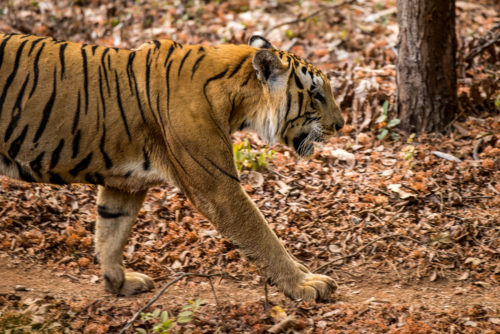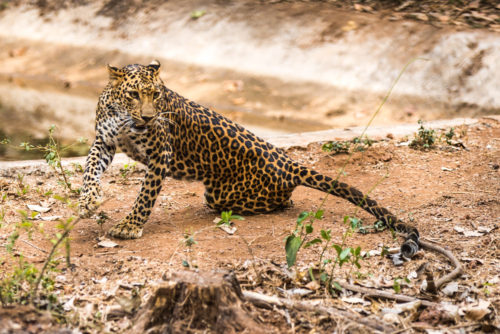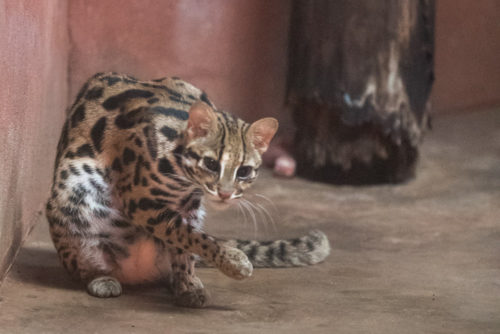
Last week I had opportunity to try the new Canon EOS-1D X II. No, I did not purchase it, nor was it gifted by Canon 😉 I was fortunate enough to have friends who are kind enough to loan it to me to get it tested. I thank Roshan Rao for courteously providing me his EOS-1D X II for a week. This is a very brief hands on test rather than a review. It is more like what I’d tell a friend if they asked “So, how was it?”

The EOS-1D X II is a replacement not just for the original 1D X, but the EOS-1D C movie model too. It looks like a modest upgrade of the tech in the 1D X with few exceptions where it breaks a new ground. Mark II’s amazing continuous shooting mode, its improved autofocus system and its 4K video capability are the main points which are big news stories.

I had one week to test this camera, ongoing heat wave and water crisis in our district forced me to abandon going to a wildlife reserve and instead to reach for an easier solution to test at Pilikula Biological Park, near Mangalore. For this test I have used the EOS-1D X II with Canon EF 70-200mm f/2.8L IS II USM for this test. The captures vary in ISO (please check the EXIF by enlarging e file). To keep it fair review I have not added any noise reduction. All files have undergone minimal post production in Lightroom CC 2015.5.1 and converted straight from RAW to JPEG.

The EOS-1D X II has a brand new sensor, but it offers only a modest 2-megapixel increase in resolution over the older EOS-1D X. At 20.2 million pixels, it’s a long way short of the 50 million pixels of the EOS 5DSR which is the other camera I have, but this is a different kind of camera aimed at a different market.

Canon’s new sensor has an important innovation. The A/D converter circuitry, which translates captured light values into digital data, has now been integrated with the sensor itself. The new sensor also incorporates Canon’s Dual Pixel CMOS AF technology for the first time in a full frame Canon. This uses phase-detection autofocus techniques to provide faster focusing in live view mode, which is especially relevant for movies.

The EOS-1D X II has upgraded processing power too, featuring dual DIGIC 6+ processors for high-speed processing – and it needs it, given its amazing continuous shooting capabilities. It can now shoot at 14 frames per second (up from 12 previously). The EOS-1D X II can go faster still in live view mode, where the mirror stays locked up, hitting 16 frames per second 🙂 It also sports insane buffer allowing you to shoot in JPEG, forever. RAW format is around 170 RAW shots uninterrupted in continuous burst shooting.

This continuous shooting speed and buffer depth relies on the latest CFast 2.0 memory cards. The 1D-X II has one CFast memory card slot and one regular CompactFlash slot. Interestingly, you won’t get the top shooting speeds if the battery level drops below 50%. Luckily Canon provided a 128GB CFast 2.0 card and a CFast card reader free of cost along with the camera as an introductory offer.

At first sight, the AF system in the EOS-1D X II looks the same as the 61-point AF system in its predecessor, with 41 cross-type sensors and 5 dual cross-type. But Canon has made lots of changes under the hood, with an expanded AF area and a new AI Servo AF III+ system which improves the tracking sensitivity for subjects moving erratically. Canon’s latest adaptive 3D tracking system adjusts to your movements as well as the subjects, such as when you swivel to follow a subject moving past you, for example.

I found the auto focus especially very quick and fast in acquiring focus. As compared to all the older canon cameras including its predecessor, the focus acquisition, even in low light is very commendable. One big news for photographers who use long telephoto lenses with teleconverters – all 61 AF points now work at f/8. AI servo mode was much more accurate and very nicely predictive. This should help lots of sports and Bird in flight photographers immensely.

Canon has provided Built in GPS now, which was not a big news for me. Wi-Fi needs to be purchased separately and is a pain to dangle it as a dongle 🙂

The EOS-1D X II introduces another major new feature – 4K video at 60P and Full HD 120P Video. Since I don’t shoot video, I can’t say much about it. Interestingly, the EOS-1D X II shoots at 4,096 x 2,160 pixels, rather than the slightly smaller UHD format most other cameras refer to generically as ‘4K’. The one possible complication is that this 4K video is slightly wider than the standard 16:9 ratio used by UHD, full HD and standard HD – it’s actually closer to a 17:9 ratios. EOS-1D X II can’t save 4K to an external recorder via HDMI – it’s restricted to 1920 x 1080. 4K can only be recorded internally.

Canon has chosen the Motion JPEG format for video capture because this stores a full image for each frame of data and allows the extraction of 8.8-megapixel stills. It means I can capture good-quality still images at 60 frames a second, albeit not at the sensor’s full 20-megapixel resolution. Grabbing stills from video is being taken much more seriously with the advent of 4K.

The EOS-1D X II’s new Dual Pixel CMOS AF sensor plays an important part in video recording, allowing fast and smooth auto focus during filming with the camera’s Movie Servo AF and touch-panel auto focus point selection. I tried it and rack focus works beautifully with touch as well as face recognition.

They super-tweaked the auto focus system and it is everything you’d hoped it would be. It’s incredibly fast, and quite accurate focus system most of the time. Even in low light as in the case of the King cobra enclosure above (the enclosure was closed as they were breeding) it was able to nail the auto focus brilliantly.

For evaluating ISO Noise, I didn’t get to do a side-by-side test with it, but I made sure to shoot some ISO 6400 around the reptile enclosure area where the light was just terrible, and I was really impressed with how clean and sharp the files looked, even at really high ISO settings. Same situation can be seen in the Leopard cat enclosure too. Both these were shot at ISO 6400, near dark situation and auto focus, despite slight hunting locked superbly.

I can say noise profile is very much like EOS-1D X and 5D mark III. The files look very sharp, with really great overall contrast, and the color rendition is just right even at ISO 6400.
Here is one point I missed sorely in EOS-1D X II. They added touchscreen technology for when you’re shooting video, and in live view, but the screen on the back isn’t a touchscreen for anything else. You can’t choose menus by touch, or swipe through images, or pinch to zoom with touch, and so on like you’ve been able to do for years now on my old EOS 70D & 80D model. I think given a choice, most folks would opt for the “real” touchscreen version when the senor is already built in.

So how was it? It’s a lot like the EOS-1D X, only faster. I can say it is EOS-1D X on steroids. The Canon EOS-1D X II is the real deal for sports & wildlife photographers who always want more and better of everything. EOS-1D X II has given more megapixels, faster frames per second; probably a lower noise in high ISO situations, a fast and better focus. I think Canon delivered substantially better camera and a worthy upgrade to EOS-1D X.

For rest of us who are not really keen on buying this beast of a camera, for various reasons, price being the first among them, I would suggest wait for announcement EOS 5D Mark IV which I am sure will incorporate most of the innovations included in EOS-1D X II.


Great review sir I like your conclusion “I would suggest wait for announcement EOS 5D Mark IV which I am sure will incorporate most of the innovations included in EOS-1D X II.”